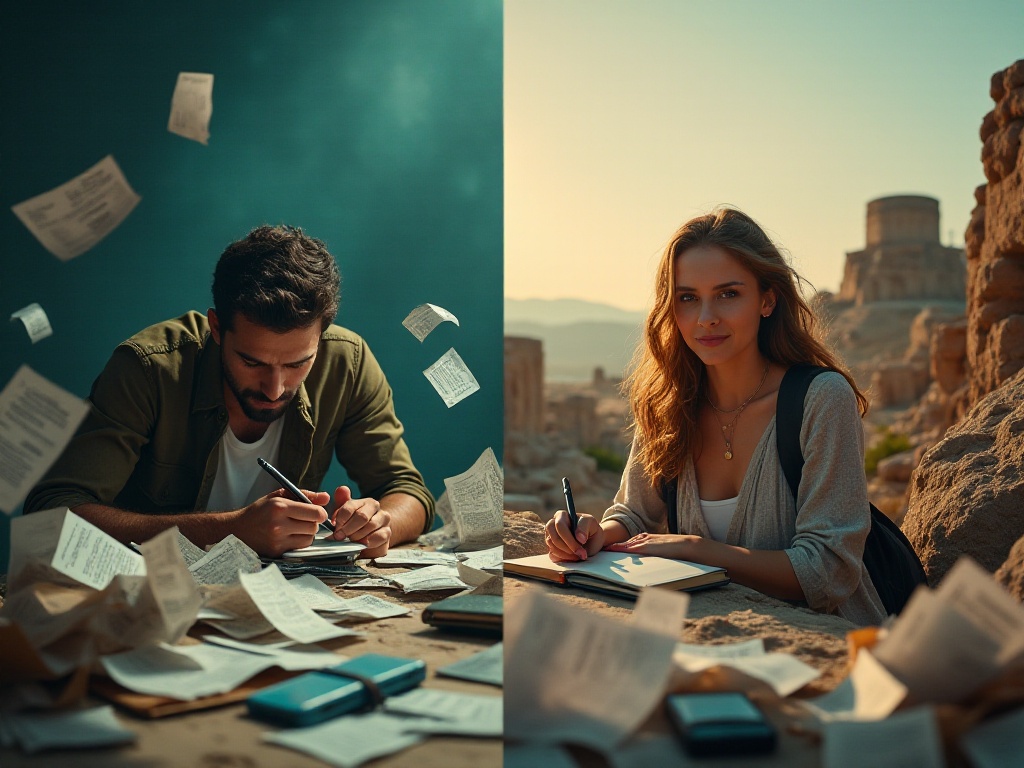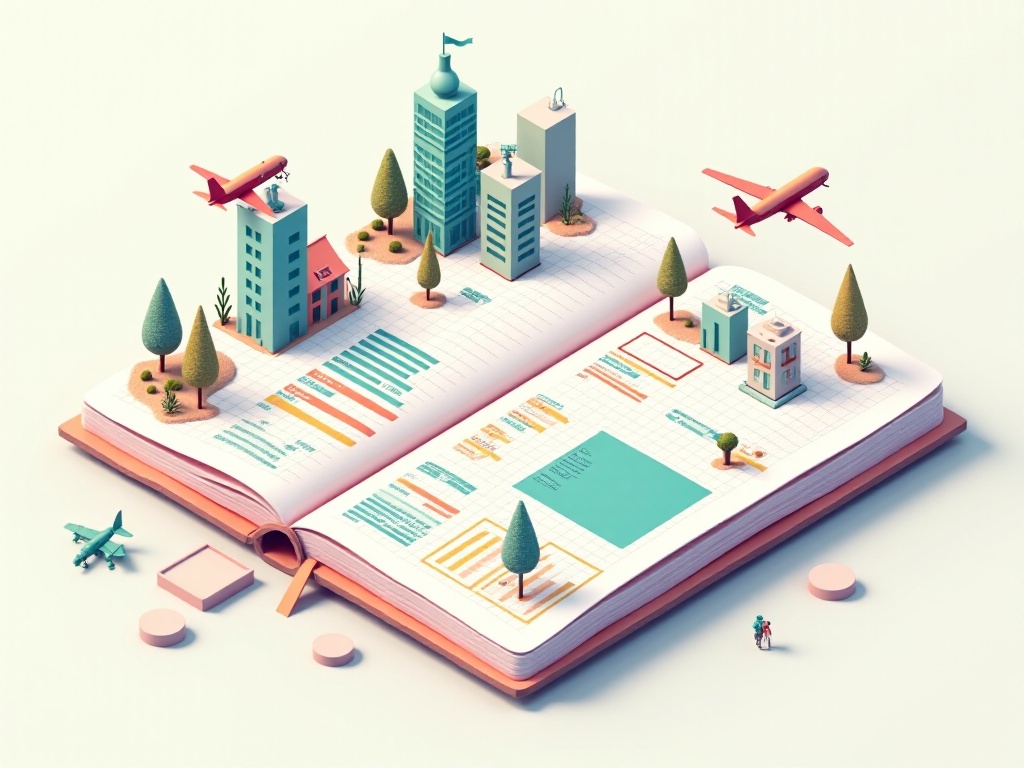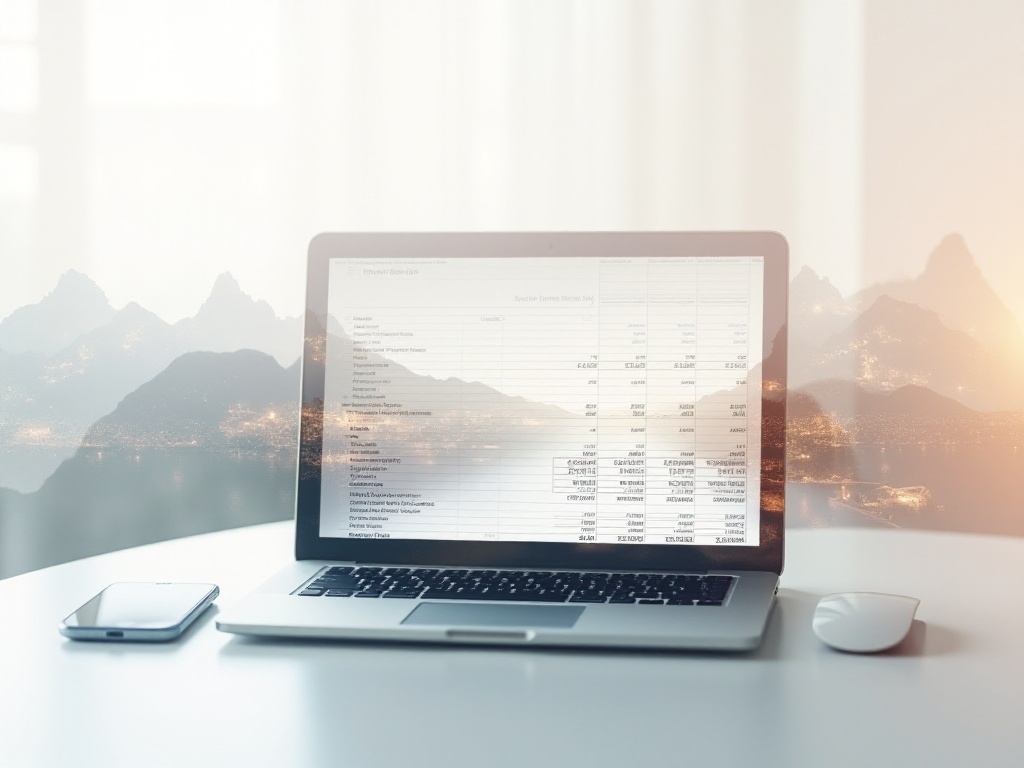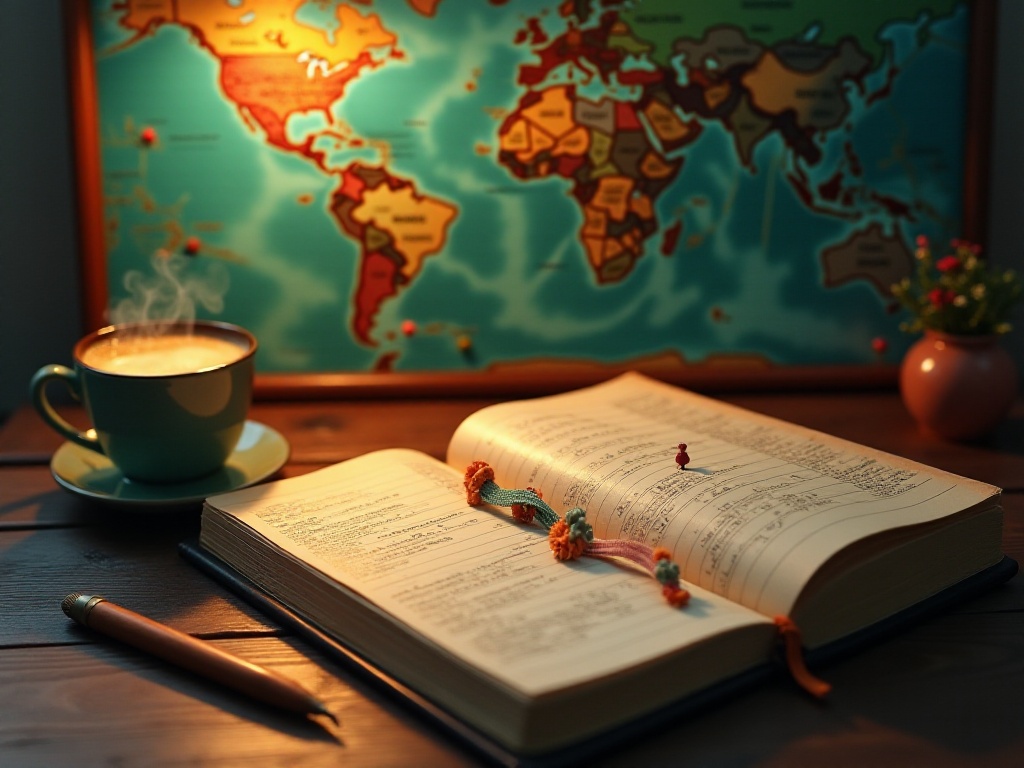Opening Chat
Lying in bed scrolling through my phone, watching others' around-the-world travel vlogs, do you also wonder: how much money do you need to prepare for such a spontaneous journey? As someone born after 1995 who just completed an 8-month world tour, I've realized that travel budgeting is much more complex than imagined. Today, I'll share in detail how I planned and spent this 380,000 yuan.
To be honest, I was completely lost at first, having no idea where to start. After searching many travel guides online, I saw budgets ranging from 200,000 to 1 million yuan. While everyone's advice seemed reasonable, none seemed quite right for me. Eventually, I realized that instead of obsessing over others' budgets, I should focus on planning my own.
Early Preparation
I remember my hands trembling when I first opened Excel on my computer. After all, this was probably the first time in my life I'd manage such a large sum of money. I listed everything: salary card balance, Huabei credit limit, Alipay balance, investment accounts, Yu'ebao... My monthly mortgage payment of 5,000 and some pending fixed deposits all needed consideration.
After calculations, I found I had about 450,000 yuan available. But I set a rule: must keep three months of daily expenses. Living in Beijing costs around 7,000 monthly, so I needed to reserve at least 21,000. This left about 400,000 for travel.
I didn't dare allocate all 400,000. What if emergencies arose? So I set a budget ceiling of 380,000. Honestly, seeing this number shocked me. It's three years of my salary! But then I thought, if I only get one chance to travel the world, it's worth it.
To track every penny, I designed a detailed Excel budget spreadsheet. This wasn't just an ordinary expense tracker - I divided it into several sheets: visa planning, flight bookings, accommodation arrangements, attraction tickets, daily expenses, emergency funds... Each sheet had warning mechanisms where cells would automatically turn red if spending exceeded the budget.

Departure Preparation
The pre-departure preparations were truly eye-opening. I used to think travel was just about booking flights and hotels, but the initial investments alone were substantial.
First were visa fees - a bottomless pit! Schengen visa cost 998 euros, U.S. visa 1,056 dollars, Australian visa 1,200 AUD... These major country visas alone cost nearly 20,000 yuan. Many visa centers were in Beijing, requiring several days off work just for applications.
Some visas had specific requirements. U.S. visa needed three months of bank statements and proof of at least 150,000 yuan in deposits. I deliberately kept money in the bank for a while just for this certification. Japanese visa required 45×45mm photos, forcing me to retake passport photos.
Then insurance - absolutely cannot skimp on this! After comparing several companies online, I chose a global travel insurance covering medical, accident, flight delays, and lost luggage for 3,600 yuan. This proved invaluable when I got gastroenteritis in Thailand - the 2,000+ medical bill was fully reimbursed.
Vaccines were another significant expense. Yellow fever vaccination was mandatory before visiting Africa and South America. At Beijing International Travel Healthcare Center, the yellow fever vaccine alone cost over 2,000. With other necessary vaccines like hepatitis A, B, tetanus, etc., total came to 4,300. I felt terrible after vaccinations, feverish for two days, but it was worth it for safety.
Essential gear purchases included a lightweight 24-inch Samsonite suitcase for 1,500 yuan; an anti-theft backpack for camera and laptop, 800 yuan; waterproof hiking shoes, 600 yuan; a windbreaker, 800 yuan... Equipment totaled nearly 5,000 yuan.
Transportation and Accommodation
Regarding transportation, flights were definitely the biggest expense. 120,000 of the 380,000 went to airfare - sounds scary, right? But this covered five continents with over a dozen long-haul flights.
I worked hard to save on flights. Started hunting for deals six months ahead, setting price alerts on Fliggy and booking immediately when discounts appeared. Sometimes price alerts woke me at night, and I'd rush to book tickets still in my pajamas.
I got several airline credit cards specifically to accumulate miles. Used these cards for daily purchases to slowly build points. Eventually redeemed two long-haul tickets, saving nearly 10,000 yuan.
When choosing flights, I prioritized connecting flights. Though flight times were longer, they saved hundreds or even thousands. Flying London to Sydney, I chose to transfer in Kuala Lumpur, saving over 3,000 yuan. During the 6-hour layover, I even did some duty-free shopping - killing two birds with one stone.
For accommodation, flexibility is key. During peak season, many popular cities have expensive hostels. Paris hostels charged over 200 yuan per bed during peak season, with limited availability. Apartment sharing with locals through Airbnb often proved more economical.
I spent a week in Paris, sharing an apartment with a local girl through Airbnb. Though the room was small, location was excellent near Bastille Square. Week's stay cost only 1,800 yuan, averaging 257 daily - much cheaper than hostels. Having kitchen access also saved on meal costs.
But rental safety is crucial. I only booked through official platforms, choosing properties rated above 4.5 stars. Always communicated check-in time and location clearly with hosts beforehand. Once in Rome, the host changed address last minute, leaving me wandering alleys with my luggage - very frustrating!
In less touristy places, accommodation options were limited. In some African small towns, I could only find basic hotels. Though conditions were basic, prices were cheap and offered authentic local experiences. At a small town in Tanzania, my hotel cost just over 100 yuan per night. Hot water was unreliable, but the sunset view of Kilimanjaro from the balcony was incredible!

Daily Expenses
Daily expenses were the hardest to control. I set a daily budget of 400 yuan, covering food, entertainment, and local transportation. Sounds substantial, but purchasing power varied dramatically between countries and regions.
In Southeast Asia, 400 yuan went far. In Hanoi, Vietnam, authentic pho cost just 20 yuan, coffee 30 yuan, motorcycle rides to attractions around 10 yuan. A day of pho for lunch, afternoon coffee, and night market dinner totaled only about 200 yuan.
But in Northern Europe, 400 yuan was barely enough. In Iceland, a regular restaurant steak cost 380 krona (about 200 yuan). Supermarket sandwiches were 70 krona (about 35 yuan). Once splurged on seafood paella at a Reykjavik restaurant - over 500 yuan for one meal, painful for quite a while.
So in Nordic countries, I mostly cooked. Weekly supermarket trips for bread, eggs, vegetables, and meat. Though groceries weren't cheap, still cheaper than eating out. Plus, cooking meant healthier eating - win-win.
For transportation, I prioritized walking or public transit. Many European cities offer daily or weekly metro passes. In Berlin, a week pass cost just 30 euros (about 240 yuan), saving considerably. Europe's extensive public transportation made getting around convenient.

Budget Execution
Honestly, budget execution was the hardest part. Initially recorded every expense on my phone, making travel companions impatient. But maintaining this habit proved crucial.
Used an app called "Shark Finance" to categorize expenses: transportation, accommodation, dining, tickets, shopping, etc. Spent ten minutes every night reviewing day's expenses, checking for budget overruns.
Through detailed recording, discovered museum and attraction tickets were major expenses. European museum tickets often start at 20 euros. Later learned to check free admission times.
Like the Louvre in Paris - free first Sunday monthly. Adjusted itinerary specifically for this. Though queues were long, saved 25 euros - enough for two authentic croissants in Paris.
Also discovered many cities offer attraction passes. Rome's Roma Pass includes Colosseum, Roman Forum, and metro access. Much cheaper than buying separately.
Money-Saving Tips
Over these 8 months, gathered many money-saving tricks. First, never buy water at airports! Airport prices are inflated - a bottle might cost 20 yuan. Carried empty bottle, filled at water fountains after security. European tap water is potable, saving at least 20 yuan daily.
Many cities offer free walking tours - great value! Guides work for tips, pay based on service quality and budget. Joined Prague walking tour led by Czech university student - engaging and informative. Tipped 200 koruna (about 60 yuan), much cheaper than organized tours.
For longer stays, consider apartments. Having kitchen saves on meals, free laundry saves dry cleaning costs. Two weeks in Vancouver apartment averaged 200 yuan less daily than hotels.
For shopping, targeted sale seasons. Europe has winter and summer sales with big discounts. Got MK bag in Milan at 40% regular price. Paris Galeries Lafayette sale season cosmetics half price of China retail.

Unexpected Expenses
Despite preparation, travel brings surprises. Caught typhoon in Japan - Osaka flight cancelled, rebooked to Nagoya cost extra 3,000 yuan.
Once in Australia, phone water damage. Simple repair in China, but Sydney phone repair expensive. Cost 1,200 AUD (about 6,000 yuan) to fix. Recommend 10-15% buffer in budget for emergencies.

Experience Summary
Was 380,000 for 8 months worth it? Absolutely! Nearly 250 days, 27 countries, countless memorable moments. Average daily expense around 1,500, covering everything.
Watching sunrise at Egyptian pyramids; chasing aurora in Iceland's -20°C winds; witnessing lions hunting wildebeest on African plains; experiencing life cycles at India's Varanasi Ganges - experiences money can't buy.
Some might say it's a year's salary gone. But doing what you most want in your prime years is investment itself. This journey broadened horizons, brought interesting friendships, taught budget planning and financial management - priceless experiences.
Through travel, gained new perspective on money. Previously thought saving difficult, but through travel budget management, learned any goal is achievable step by step. Applied these financial lessons to daily life, developing more rational spending habits.
Now it's your turn - if planning spontaneous travel, prioritize budget planning. Detailed budget plan means less worry, more joy. Remember, travel isn't for showing off, but personal growth. Looking forward to meeting your best self on the journey!


